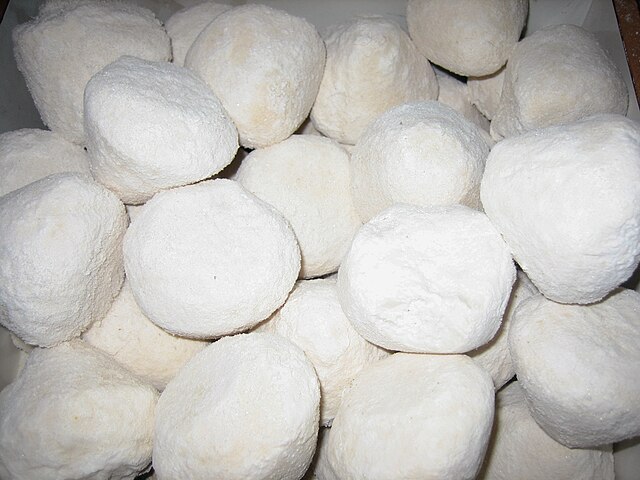Irshoof: A Taste of Jordan’s Winter Traditions

Yara Marei/Arab America contributing writer.
On a cold winter evening inside a small, cozy kitchen, a family gathers around a simmering pot of Irshoof, eager to share a meal passed down through generations. Like many others in Jordan, this dish tells a story of tradition, community, and resourcefulness. With each bite, you taste the rich history of the land—a blend of hearty wheat, wholesome lentils, and tangy jameed whey, all cooked together to create a traditional dish. Irshoof is made from simple ingredients yet crafted with love and care. Let’s discover this with Yara Marei, an Arab America contributing writer.
Irshoof, known as “Al-Madqouqa” in some parts of Jordan, is a dish deeply rooted in Jordanian heritage. Especially cherished during the cold winter months, this hearty meal reflects the agricultural bounty and the simple, resourceful approach to cooking that defines Jordanian cuisine. Made with humble ingredients such as wheat, lentils, and sour yogurt, each region of Jordan adds its own unique touch, making the dish as diverse as the people who prepare it.
The Key Ingredients: A Blend of Simplicity and Flavor
Irshoof is built around three essential ingredients:
- Jreesh (Cracked Wheat): The coarse flour from wheat adds body to the dish and gives it a satisfying, earthy texture.
- Lentils: The use of local lentils, often small and brown, adds depth and nutrition, making the dish wholesome.
- Jameed (sour yogurt): This tangy yogurt adds flavor and brings all the ingredients together into a creamy, rich consistency.
In some regions, especially in Balqa, the dish is enhanced by the addition of fried onions cooked in ghee, providing an aromatic flavor and golden color that contrasts with the lentils and wheat. Some families also incorporate bread to make a variation known as Thareed, adding another layer of richness.
Preparation: A Tradition Passed Down Through Generations
The preparation of Irshoof may vary slightly, but the heart of the dish remains the same across Jordan. Traditionally, it begins with soaking the lentils and Jareesh in water (Jareesh is similar to Freekeh, which means the whole wheat), which can take several hours. Once softened, the ingredients are cooked slowly, often in a large pot over an open flame.
To add a special touch, many families in Balqa fry onions in samneh baladi (local margarine), a key step in creating the rich flavor profile that defines this version of Irshoof. Once the onions are fried, they are mixed into the pot along with the lentils and wheat, and the dish is allowed to simmer, absorbing the tangy Jameed that gives Irshoof its signature creamy consistency.
Regional Variations: Adapting to Local Tastes
Irshoof is more than just a meal; it is a reflection of Jordan’s diverse culinary landscape. In some areas, Irshoof is made by adding pieces of bread into the mixture, creating a thicker and more filling dish. The bread soaks up the yogurt and lentils, making each bite both hearty and flavorful.
In contrast, families in other parts of Jordan may choose to keep the dish lighter, relying solely on the jareesh, lentils, and jameed, with fried onions as a Topping.
Serving: A Feast for Both the Eyes and Palate
When it comes to serving Irshoof, presentation is key. Some households choose to place the dish atop thin flatbreads (shraak bread), allowing the juices to soak into the bread, while others serve it in bowls, topped generously with fried onions and a sprinkle of fresh green onions. The combination of textures—from the soft wheat to the creamy yogurt, the tender lentils, and the crispy onions—creates a satisfying, multi-layered eating experience.
Irshoof: A Dish Steeped in Heritage
For many Jordanians, Irshoof is more than just comfort food; it represents a connection to the past. The dish is often prepared during special gatherings or winter evenings when families come together. Just like the famous Jordanian dish Mansaf, Irshoof holds a special place in Jordanian culinary tradition. It is not uncommon for families to prepare large pots of Irshoof, especially in rural areas, where the dish is shared with neighbors and friends.
In regions where Jareesh may not be readily available, substitutes such as bulgur or even mjaddara (a lentil and rice dish) are used to replicate the dish’s essence.
A Dish to Warm the Heart
Irshoof may not have the grandeur of Mansaf, but it is a dish that speaks to the Jordanian soul. Its simplicity, combined with its ability to feed and warm during the cold winter months, makes it a true staple of Jordanian cuisine. Whether served as a main dish or as part of a larger feast, Irshoof continues to be cherished across Jordan for its history, its flavor, and its ability to bring people together around the dinner table.
So, next time you’re looking for a taste of Jordan, give Irshoof a try. It may just become your go-to dish for those cozy winter evenings.
Check our blog here!


